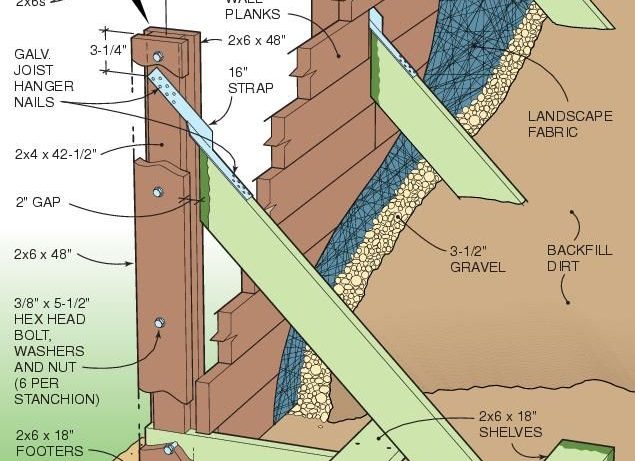
Retaining Walls are an essential component of most buildings. They can be used to divide areas or to retain spaces in a building for aesthetic or practical reasons. Concrete is the most versatile and common option.
Design Options for Retaining Walls
Concrete is cost-effective and durable, and can be used in places where other materials would seem to fail. Concrete retaining walls are the simplest and most effective form of partitioning. Professional engineers can help construct them. This wall is constructed by placing thick concrete around a foundation and then connecting it to the top. To reinforce the concrete, you can add a few strands to it.
Design Options for Retaining Walls
There are many materials that can be used to make retaining walls. The simplest form of a retaining wall would be a series block connected to one another by smaller, thinner concrete beams. Other materials include concrete, stone, bricks and plastic. Each material has its own advantages and disadvantages. For example, the stone can be extremely heavy and will need great amounts of space in which to be erected. Plastic can be exceptionally lightweight but costs more than concrete or brick.
Design Options for Retaining Walls
You can create retaining walls to fit specific dimensions and designs. Concrete is a flexible building material and can be made to any shape you like. For example, you can have the walls of your shed curved, conical or even ovular in shape. This all depends on the design requirements of your home. Precast walls can be a great option if you aren’t sure what shape you want. These examples can give a good idea about the options you have.
You can also make retaining walls from different materials. Concrete is the most common material used for this purpose. You can also use steel and stone as retainers. Each material has its strengths and weaknesses, which will help you make the right decision when making your final decision. Concrete is strong and durable, but it can be expensive to buy and is therefore more expensive to install.
Another option is for the retaining walls to be made from lightweight materials. These structures can be made out of wood, vinyl or other materials. Each of these options offers its own benefits. Wood is the most straightforward option because it is easy to erect. However, if you don’t know how to use the other materials, it’s best to choose a more durable material.
You don’t need to use concrete for your walls. Instead, you can try different metals. You can make these structures from steel, or you can use lightweight plastic. These options are the easiest to install and require less supervision. However, they do tend to rust and are not as durable as the other options.
Once you have decided which type of wall you would like, it is important to decide where the structure will be placed. Depending on where your retaining walls will be placed will also help you make a more appropriate decision. For example, if you plan to put them on the side of a hill, then you should make sure that it is far away from the root of the tree where it grows. If you plan on placing them in the middle the woods, make sure there is enough space between the wall & the tree to allow water to drain away. Keep in mind that retaining walls can be damaged by other structures, which will increase the cost of replacement.
